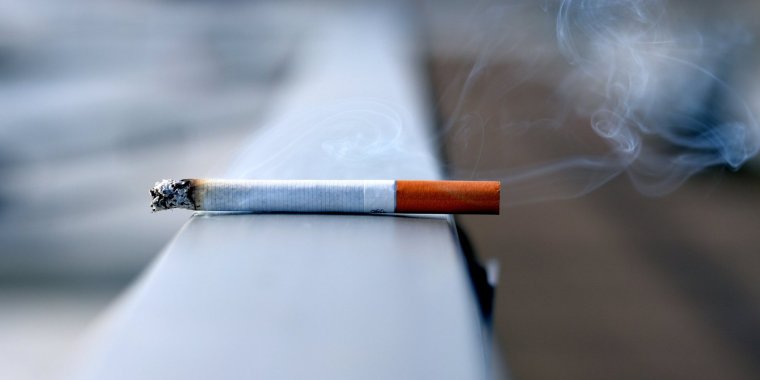| Health / Health News |
Reduced grey matter in frontal lobes linked to teenage smoking and nicotine addiction
Levels of grey matter in two parts of the brain may be linked to a desire to start smoking during adolescence and the strengthening of nicotine addiction, a new study has shown.

Reduced grey matter in frontal lobes linked to teenage smoking. Photo: Andres Siimon/Unsplash
A team of scientists, led by the Universities of Cambridge and Warwick in the UK and Fudan University in China, analysed brain imaging and behavioural data of over 800 young people at the ages of 14, 19 and 23.
They found that, on average, teenagers who started smoking by 14 years of age had markedly less grey matter in a section of the left frontal lobe linked to decision-making and rule-breaking.
Grey matter is the brain tissue that processes information, and contains all of the organ’s neurons. While brain development continues into adulthood, grey matter growth peaks before adolescence.
Low grey matter volume in the left side of the ventromedial prefrontal cortex may be an “inheritable biomarker” for nicotine addiction, say researchers – with implications for prevention and treatment.
In addition, the scientists found that the opposite, right part of the same brain region also had less grey matter in smokers.
Importantly, loss of grey matter in the right prefrontal cortex appears to speed up only after someone has started smoking. This region is linked to the seeking of sensations.
The team argue that less grey matter in the left forebrain could lower cognitive function and lead to “disinhibition”: impulsive, rule-breaking behaviour arising from a limited ability to consider consequences. This may increase the chances of smoking at a young age.
Once a nicotine habit takes hold, grey matter in the right frontal lobe shrinks, which may weaken control over smoking by affecting 'hedonic motivation': the way pleasure is sought and managed.
Excessive loss of grey matter in the right brain was also linked to binge drinking and marijuana use.
Taken together, the findings point to a damaged “neurobehavioural mechanism” that can lead to nicotine use starting early and becoming locked into long-term addiction, say researchers.
“Smoking is perhaps the most common addictive behaviour in the world, and a leading cause of adult mortality,” said Prof Trevor Robbins, co-senior author from Cambridge’s Department of Psychology.
Those with smoking experience by 14 years of age had significantly less grey matter in the left prefrontal cortex, on average.
Additionally, those who started smoking by age 19 also had less grey matter in their left prefrontal cortex at 14, indicating a potential causal influence.
The scientists also looked at the right ventromedial prefrontal cortex. Grey matter loss occurs in everyone as they age. However, those who smoked from age 14 as well as those smoking from age 19 both ended up with excessive grey matter loss in the right frontal lobe.
For the right prefrontal cortex, 19-year-old smokers who did not start during adolescence had similar grey matter levels at age 14 to those who never smoked at all.
This suggests a rapid reduction in the right ventromedial prefrontal cortex only begins with the onset of smoking.
Data at age 23 showed that grey matter volume in the right prefrontal cortex shrank at a faster pace in those who continued to smoke, suggesting an influence of smoking itself on prefrontal function.
Lead author Prof Tianye Jia from Fudan University added: “Less grey matter in the left frontal lobes is linked to behaviours that increase the likelihood of smoking in adolescence.
“Smokers then experience excessive loss of grey matter in the right frontal lobes, which is linked to behaviours that reinforce substance use. This may provide a causal account of how smoking is initiated in young people, and how it turns into dependence.”
YOU MAY ALSO LIKE





